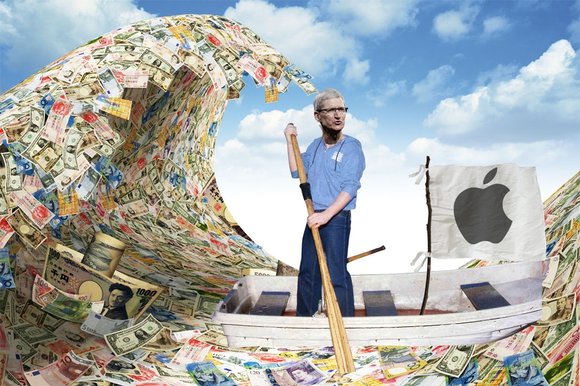Posts by John Dudovskiy

Differences in Aims and Objectives in their Implications on Leadership Practices Differences in organisational aims and objectives have been found to be a significant difference between private and public sector organisations. This difference has implications on leadership practices in public and private sector organisations. In other words, usually there are clear performance indicators to assess the performances of organisational leaders in private sector and these indicators include company share prices, market share, and the levels of revenues. In cases of public sector organisations, on the other hand, performance indicators are vague, because organisational aim and objectives usually involve qualitative rather than quantitative elements. From this perspective, while the level of effectiveness of organisational leaders can be determined within a year or even shorter period of time on the basis of several quarterly performance of the organisation, longer period of time may be necessary to establish the level of effectiveness of leaders in public sector. Differences in Organisational Stakeholder Expectations and their Implications on Leadership Practices The variety and role of organisational stakeholders have been found as another point of a vast difference between private and public sector organisations. Establishing strategic relationships with stakeholders and meeting their expectations at a reasonable extent in private sector necessitates organisational leaders to adopt various roles simultaneously. In order to be successful, private sector organisational leaders need to be perceived as socially responsible by general public, they need to be perceived as dynamic and cost saving by shareholders, and at the same time organisational leaders need to be perceived as caring and motivational by the workforce. Arguably, meeting stakeholder expectations in public sector is less contradicted compared to meeting stakeholder expectations in private sector from leadership viewpoint. This is because in most cases no stakeholder group expects profit maximisation from public sector organisations, and…

Harrison (1972) presents a model of culture, known as Harrison’s Model of Culture that divides organisational cultures into the four categories: role, task, power, and person cultures. Organisations with role culture tend to be reliant on formal rules and regulations. In role culture organisations formal job descriptions of positions are more important than personal traits and characteristics of individuals taking these positions. In task culture organisations, on the other hand, the levels of skills and competencies to deal with tasks in hand are perceived to be the most important factor to exert influence. Task culture organisations tend to operate in project-based manner with specified deadlines for each project. Disadvantages of task culture organisations include conflicts of interests within teams and other relationship problems due to not clearly specified roles and responsibilities for team members. Power culture organisations tend to be highly autocratic, with a top executive exercising great power towards all organisational processes. The advantages of power culture in organisations can be listed as high speed of decision making and implementation of organisational changes. However, power culture is associated with a range of disadvantages as well that may include lack of constructive arguments and discussions, and lower level of employee motivation. In person culture organisations a specific individual serves as a source of influence for group members. This type of organisational culture is the least popular due to the fact that it lacks formal hierarchy, along with other disadvantages.

Attendance of the module and completion of the report has deepened the level of my knowledge in a number of areas. First of all, I learned about the importance of branding from practical and theoretical viewpoints. Moreover, I learned about the potential contribution of effective product design and innovation in products design and its key features in successful branding. During the research process for the report I gained an in-depth knowledge about all stages of the designing process of products and services. I feel very optimistic about applicability of this knowledge in practice in the future as a manager. My knowledge has also increased in the areas of patenting, trademarks and protection of intellectual property. Studying a set of case studies from IMSS has helped me to learn about the types current global trends and assess their implications on businesses within the settings of real life business situations. The module and assessment gave me some ideas about innovation and design. Before attending the module and completing the assessment I thought of design as a static issue and did not duly understand its highly dynamic character. However, thanks to effective teaching method of the tutor, adequate materials and individual learning efforts, now I do understand that product design needs to be perceived as an integral component of new product development efforts and design needs to be based on appropriate integration of simplicity and convenience. Moreover, central idea of the module has been associated with innovation in product design and functionality as a source of competitive advantage and I have obtained an in-depth knowledge about the value of innovation in product design and functionality to be used in the future during my career. The role of branding and effective marketing communication is another area of knowledge that I have gained through attending…

Business turnaround can be defined as financial recovery of the company after the period of poor performance. The financial recovery can be achieved through implementing a specific set of strategies by the senior level management. The most popular turnaround strategies include the following: Re-building around a profitable core business Re-branding Changing organisational culture. New product development Cost reduction through human resources downsizing and other measures The choice of turnaround strategies listed above by a company depends on a wide range of factors such as situation in the marketplace, availability of resources, the present pattern of organisational culture and others. Apple’s primary turnaround strategy relates to rebuilding around a profitable core business. Manufacturing of IPhone and IPad have proved to be highly profitable core business for Apple and the management is further increasing its focus on these core businesses through the introduction of IPad Mini, development of lower cost Iphones for emerging markets such as India and China, and committing to investment for further developments of IOS platform. Changing organisational culture can be specified as another turnaround strategy currently in use by Apple CEO Tim Cook. Under former CEO Steve Jobs, Apple organisational culture was famous for being overly harsh, competitive and even exploitative of employees. However, having a reputation for being a ‘nice guy’, Tim Cook is believed to be leading a ‘quiet cultural revolution’ to foster more communication between various levels of management and to make Apple nicer workplace in general. Specifically, the micro-management practice of former CEO Steve Jobs has been abandoned and the level of involvement of employees in strategic decision making has been increased. Moreover, new product development has been employed by Apple CEO as additional turnaround strategy. Apple is believed to be developing watches and television that might have the same impact on respective products…

The theoretical framework of Cultural Dimensions introduced by Geert Hofstede as a result of assessing the values of more than 100,000 IBM workforce from 50 countries represent one of the most significant contributions to the development of cross-cultural studies. Hofstede differentiates cultures on the basis of following dimensions: individualism versus, collectivism, power distance, uncertainty avoidance, masculinity versus femininity, and long-term versus short-term orientation. Individualism versus Collectivism Individualism “describes the tendency of people to see themselves as individuals rather than as members of a group” (Velo, 2012, p. 26), whereas collectivism is associated with preference for group thinking and prioritising advantages of the group over individualistic advantages. In organisations where collectivistic culture prevails employees consider decision making to be the responsibility of superiors. Similarly, Andrews (2009) argues that employees in highly individualistic work cultures feel motivated to engage in decision making in an individual manner. Power Distance Power distance is an extent to which group members are willing to accept unequal distribution of power. In societies with high power distance unequal distribution of power is tolerated by group members to a great extent. Such societies managers are not generally approachable and the most popular form of communication is downward communication. In societies with low power distance, on the other hand, members of society are perceived to be more or less equal. Managers in low power distance organisations are viewed as peers by subordinates and there is usually two-way communication in such type of organisations. Uncertainty Avoidance Uncertainty avoidance dimension of culture refers to the degree of tolerance towards ambiguity and unexpected events and unstructured situations. Societies with high levels of uncertainty avoidance prefer to operate within highly structured environment and generally they have negative approach towards uncertainties. Bhattacharyya (2010) recommends the development of clear procedures and directives when…

Information and communication technologies (ICT) have had tremendous impact virtually all industries and sectors, as well as, specific business businesses processes. The impact of ICT on businesses relate to the facilitation of communication with organisational stakeholders, serving as an effective sales channel, providing an effective platform for engaging in marketing and others. Literature review is a “systematic, explicit and reproducible method for identifying, evaluating and interpreting the existing body of recorded work produced by other scholars” (Khan, 2008, p.41). Importance of conducting literature review in this paper can be explained in a way that it allows to present the most notable data about various important aspects of ICT in tourism and hospitality so that this data can be referred to during the case study analysis. ICT in Tourism and Hospitality Sector Parsons and Oja (2013) mention online reservations systems as one of the greatest impacts of ICT on tourism and hospitality sector. Major travel companies such as Expedia, Orbitz, and Thomas Cook, as well as, medium and even small sized tourism and hospitality firms have online reservation functionalities on official company website. Online reservation capabilities provide substantial cost saving opportunities for businesses in tourism and hospitality sector that otherwise would have been spent on human resources making reservations in a manual manner. Moreover, according to Mihalic and Buhalis (2013), while the majority of businesses in tourism and hospitality sector have adopted various components of ICT to certain extent, there are substantial differences between businesses in terms of extent and nature of adoption of those components. In simple terms, Mihalic and Buhalis (2013) argue that some tourism and hospitality organisations have effectively included ICT to the sources of competitive advantage, whereas opportunities offered by ICT are yet to be used by others. Importance of ICT to Small Hospitality Companies…

Generally, two alternative approaches can be used for website evaluation: quantitative and qualitative. Quantitative approach, as the name suggests is closely associated with numbers and calculations such as the numbers of website visitors, visitor bounce rate, the numbers of countries the website is visited from etc. Qualitative approach, on the other hand, includes non-quantifiable criteria such as design, navigation, interactivity and others. Qualitative approach has been adopted for Tophams Hotel website evaluation, and accordingly, non-quantifiable elements have been selected as evaluation criteria. The rationale for the choice of qualitative approach relates to the fact that factors impacting website visits and visitor experiences are qualitative as well. This argument is supported by findings of the literature review provided above. The following table presents a set of website evaluation criteria selected to conduct Tophams Hotel website evaluation and briefly explains rationale for the choice of each criteria. Criteria Rationale for the choice of criteria First impression First impression has direct and significant impact on the visitor bounce rate on the website. Factors impacting first impression include download time of the website, design features and capabilities, presentation of credential validations etc. Navigation capabilities Nowadays website visitors expect advanced level of navigation capabilities and absence of navigation capabilities at this level is most likely to have negative implications on brand image. Quality of content Importance of usefulness and relevance of the content can not be disputed. The literature review found factors impacting content quality to include information being up-to-date, availability of the content in several languages, FAQs and others. Attractions Attractions are aimed at encouraging return visits to the website, and thus they play great role in achievement of website objectives. Ease of finding information This specific criterion can be marked as a critical success factor for any website and its importance is…
By John Dudovskiy
Category: E-Commerce

Distribution channels in tourism can be divided into two levels: national and international. In national level, domestic market is served by large tourism operators and retail travel agents. In international level, on the other hand, tourism distribution may involve tourism operators, retail travel agents, as well as, wholesalers. According to Moutinho (2011) tourism distribution channels involve supplier products to be public (consumers) through channels members. Mourinho specifies individual parties in each category in the following manner: Supplier products Channel members Public Transport Accommodation Insurance Entertainment Tours Specialised services Tour operators Travel agencies Cross suppliers Suppliers Other Individuals Groups Organisations Tourism services, distributors and target population Source: Moutinho (2011) Mohapatra (2013) also discusses various aspects of distribution channels in tourism presented in above, and observes an interesting tendency in relation to these channels. Namely, according to Mohapatra (2013), the share of online sales transactions through these channels have been consistently and rapidly increasing compared to the volume of offline sales transactions during the two decades. However, Mohapatra (2013) fails to refer to any official statistical data to back up this claim. References Mohapatra, S. (2013) “E-Commerce Strategy: Text and Cases” Springer Group Moutinho, L. (2011) “Strategic Management in Tourism” CABI

Brands operating ecotourism services can be divided into two categories: brands offering ecotourism services as the only type of service and brands that offer ecotourism along with alternative types of tourism. Communication and branding are critical success factors for new product development. However, communication and branding efforts directed towards ecotourism can be vastly different compared to communication and branding efforts associated with many other products and services due to a set of unique aspects of ecotourism. Usually, ecotourism brands position their services as nature related tourism. Major ecotourism brands aim to target their customer segment though communicating their marketing message via various channels. Generally, profile of ecotourists in Europe can be described as middle-age to elderly experienced travellers who are opinion leaders with high education and within higher income bracket (Global Ecotourism Factsheet, 2006). Major ecotourism tour operators in the UK targeting this customers segment include Travel Corporation, Thomas Cook Group plc, TUI Travel plc, Acromas Holidays ltd, Trailfinders Ltd, Holidaybreak Ltd, Portman Travel Ltd and others. The most popular ecotourism destinations include Annapurna area in Nepal, Mayan sites in Belize, Galapagos Islands, Kenya, Australia, Peru, Brazil, South Africa and others. Competition in Ecotourism Competition in ecotourism is intense with tour operators if various sizes competing with each-other. According to the World Tourism Organisation (WTO) the number of international tourist arrivals exceeded one billion in 2012, and it is forecasted to reach 1.8 billion mark by the year of 2030. Company name Number of outlets % share of outlets Thomas Cook 777 19.0 CGL 360 8.8 Midlands 102 2.5 TUI 866 21.2 Flight Centre 90 2.2 Bath Travel 65 1.6 STA Travel 51 1.2 Hays Travel 44 1.1 CGL managed services and franchises 40 1.0 Other ABTA outlets 1385 33.9 Non-ABTA outlets 267 6.5 Travel agencies in the UK…

Generally, design can be defined as “realisation of a concept or idea into a configuration, drawing, model, mould, pattern, plan or specification (on which the actual or commercial production of an item is based) and which helps achieve the item’s designated objectives” (Business Dictionary, 2014, online). Design of products and services is a separate science in marketing to be approached in a serous and responsible manner. Design process for new products and services involve the stages of initial research, concept formulation, initial design, development, construction of a prototype, engineering, and production. However, the extent of applicability of design process described above is highly limited towards ecotourism primarily due to the fact that it is highly difficult to develop new ecotourism destinations from the scratch. Accordingly, the key features of design elements of ecotourism are vastly different from the key features of design elements of the majority of products and services. Key features of ecotourism design elements can be specified as genuineness of nature environment, specific wildlife, pure ecosystem with accessible interpretation trails, level of excitement of its nature phenomenon, ecolodge, cultural immersion of local people, and historical heritage. The level of relevance of these key features to customer needs is discussed in the following part of the report. Ecotourism Design Elements and Customer Needs The following table illustrates the relevance of ecotourism design elements to customer needs: Key features of ecotourism design Discussions Genuineness of natural environment Ecotourists have high levels of interest in genuine nature places such as forests, national parks, marines, etc. Specific wildlife Higher levels of wildlife such as animals living in a free habitat have serve as effective attraction for ecotourists Ecosystem Ecosystems can be explained as self-sustaining communities within natural settings (Schmitz, 2007) and they represent a major point of interest for ecotourists Ecolodge…
